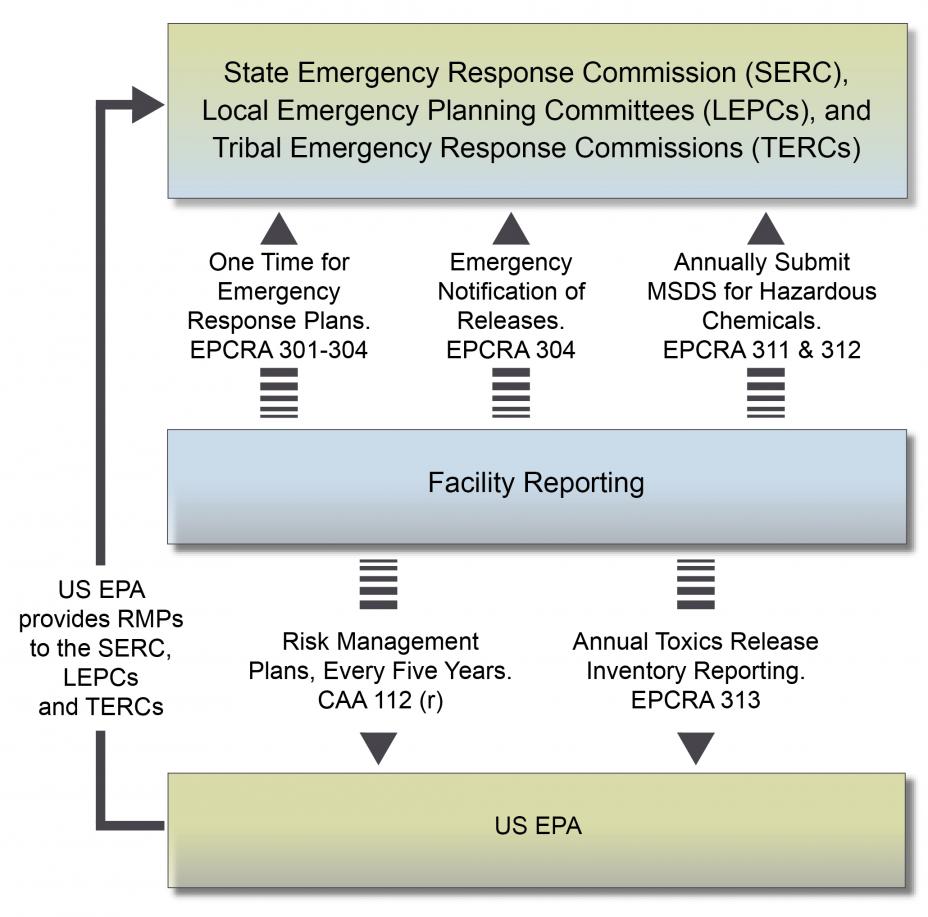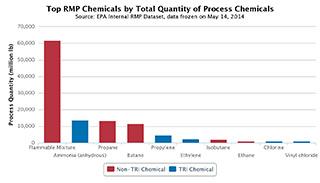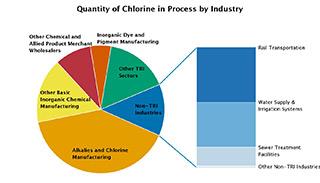TEST 2013 TRI National Analysis: TRI & Beyond - Chemical Safety and Emergency Planning
Section 3: Chemical Safety and Emergency Planning
In the wake of recent chemical spills and accidents at facilities in Texas, West Virginia and North Carolina, the government has renewed its focus on chemical safety and accident preparedness. On August 1, 2013, the President signed Executive Order 13650 to improve the safety and security of chemical facilities and reduce the risks of hazardous chemicals to workers and communities.
Both the Emergency Planning and Community Right-to-Know Act (EPCRA) (which includes the Toxics Release Inventory), and the Clean Air Act (CAA) section 112(r) Risk Management Program encourage communication between facilities and the surrounding communities about chemical safety and chemical risks. The programs implemented under these regulations are intended to encourage state, local, and tribal planning for, and response to, releases of hazardous substances; to provide the public, local governments, fire departments, and other emergency officials with information concerning potential chemical hazards present in their communities; and to prevent and minimize the impact of chemical releases.

TRI data, along with other EPCRA and risk management data on chemical storage and use, provide a greater understanding of potential hazards in communities. EPCRA, enacted in 1986, has four major provisions. The Community Right-to-Know provisions cover TRI (section 313) and the hazardous chemical storage reporting requirements (sections 311-312). Other EPCRA sections focus on emergency planning (sections 301-303) and emergency release information (section 304). The CAA 112(r) establishes the Risk Management Plan (RMP) rule and helps to reduce harm from extremely hazardous substances (EHS). Facilities covered report information to the respective authorities as noted in the diagram.
The types of hazardous and toxic chemicals covered by the RMP and each of the EPCRA provisions differ as shown in the table below. A broad array of chemicals is also covered, more extensive than the 650 chemicals and chemical categories covered by TRI.
| Chemicals Covered by EPCRA and CAA Section 112(r) | |
|---|---|
| EPCRA 301-303 | 355 extremely hazardous substances (EHS) |
| EPCRA 304 | 355 EHS and approximately 800 specific substances and 1,500 radionuclides under CERCLA |
| EPCRA 311/312 | More than 500,000 hazardous substances with material safety data sheets (MSDSs) |
| EPCRA 313 | More than 650 toxic chemicals and chemical categories |
| CAA 112(r) | 77 EHS and 63 flammable gases and liquids |
Regulatory requirements by themselves will not guarantee safety from chemical accidents. Those who are handling hazardous substances must take the responsibility and act to prevent, prepare for, and respond to chemical emergencies. For extremely hazardous substances (EHS), a facility must notify the appropriate officials and participate in local emergency planning activities. This includes preparation of an emergency response plan that contains information community officials can use at the time of a chemical accident. A facility covered under the RMP Rule is required to submit a Risk Management Plan (RMP) to EPA. Currently, approximately 13,000 facilities have an active RMP.
| Graphics in this section | |
|---|---|
| Top RMP chemicals processed |
Example chemical: Chlorine reported in RMP & TRI |
This page was published in January 2015 and uses the 2013 TRI National Analysis dataset made public in TRI Explorer in October 2014.


